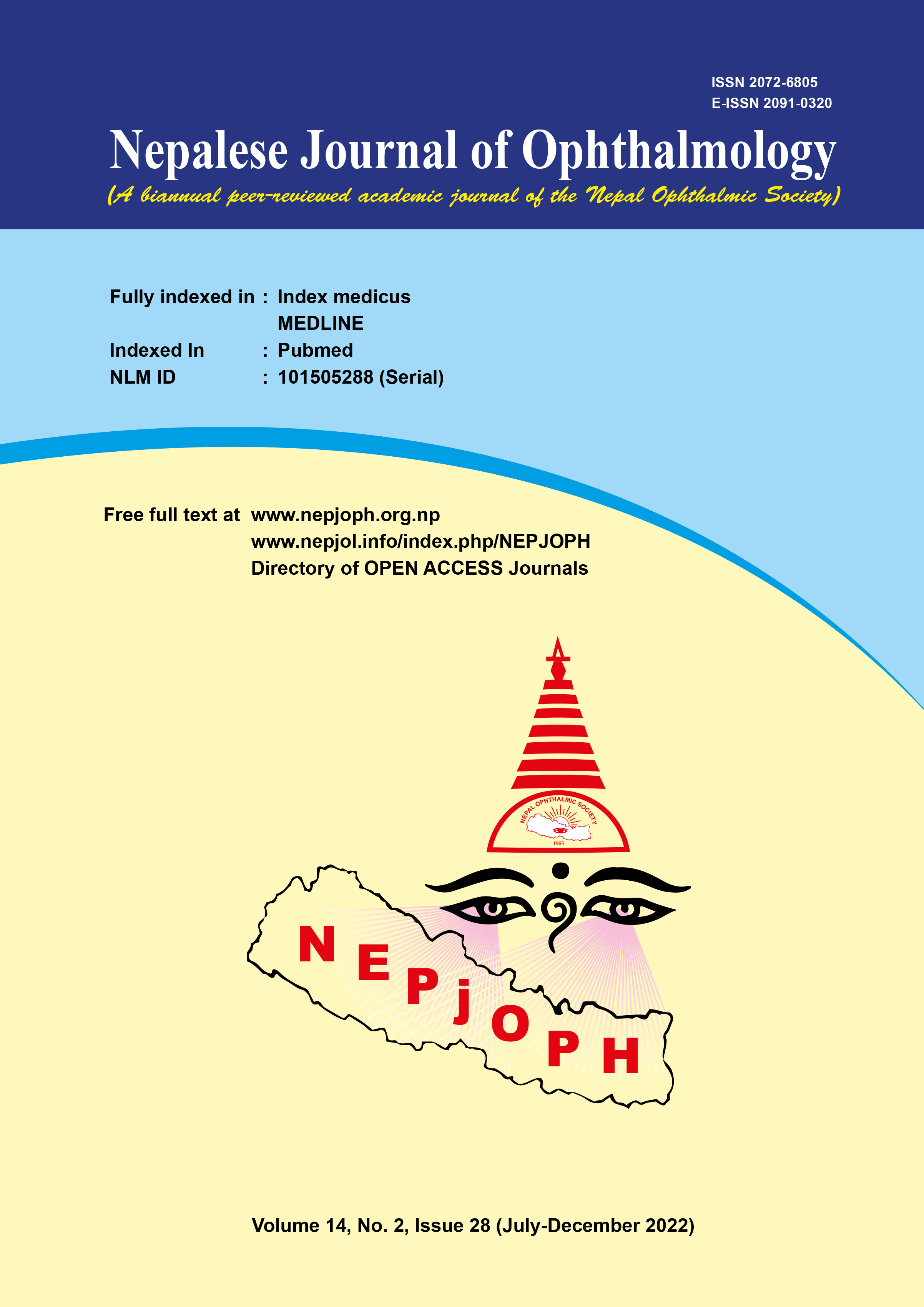Ocular toxicity among patients taking anti-tubercular treatment
DOI:
https://doi.org/10.3126/nepjoph.v14i2.42455Keywords:
Anti-tubercular treatment (ATT), Ethambutol, Optic neuropathy, Optical coherence tomography (OCT), TuberculosisAbstract
Introduction: Tuberculosis remains a major public health problem in Nepal and anti-tubercular drugs used for the treatment of pulmonary and extrapulmonary tuberculosis can be associated with ocular toxicity. This prospective study aimed to evaluate the incidence of ocular toxicity among patients receiving anti-tubercular therapy and to assess the change in visual functions and ocular imaging before and after use of anti-tubercular therapy.
Materials and methods: A total of 89 eyes of 45 TB patients taking anti-tubercular therapy were enrolled. Detailed history and examination including best-corrected visual acuity (BCVA), colour vision (Farnsworth D-15t), contrast sensitivity (Pelli-Robson chart), Goldman visual field analysis and spectral domain optical coherence tomography for retinal nerve fibre layer (RNFL) analysis were assessed at baseline and at 6 months after starting anti-tubercular therapy. Visual evoked potential (VEP) was performed in suspected cases.
Results: The mean age of the patients was 29.13±14.00 years and 62.2% were males. The mean weight of the subjects was 54.37±10.36 kg, mean daily dosage of ethambutol was 17.91±1.74 mg/day/kg and mean administration duration was 2.71±1.54 months. The incidence of ocular toxicity was 2.24%. Bilateral retrobulbar optic neuropathy occurred in a 27-year female of 55 kg receiving ethambutol (20 mg/kg/day) for 6 months for Pott’s spine. Her best-corrected visual acuity in both eyes was reduced to 6/36 from 6/6 and developed non-specific color vision defect, decreased contrast sensitivity, bilateral cecocentral visual field defect and mean decrease in retinal nerve fibre layer thickness compared to the baseline data. In rest cases, a statistically significant decrease in mean retinal nerve fibre layer thickness in both eyes suggested the evidence of subclinical toxicity.
Conclusion: Though less common, ethambutol toxicity can occur in patients under anti-tubercular therapy in the form of retrobulbar optic neuritis. Decreased contrast sensitivity and thinning in the mean retinal nerve fibre layer thickness can be the indicator of subclinical toxicity.
Downloads
Downloads
Published
How to Cite
Issue
Section
License
Copyright (c) 2022 Nepalese Journal of Ophthalmology

This work is licensed under a Creative Commons Attribution-NonCommercial-NoDerivatives 4.0 International License.
This license enables reusers to copy and distribute the material in any medium or format in unadapted form only, for noncommercial purposes only, and only so long as attribution is given to the creator.




